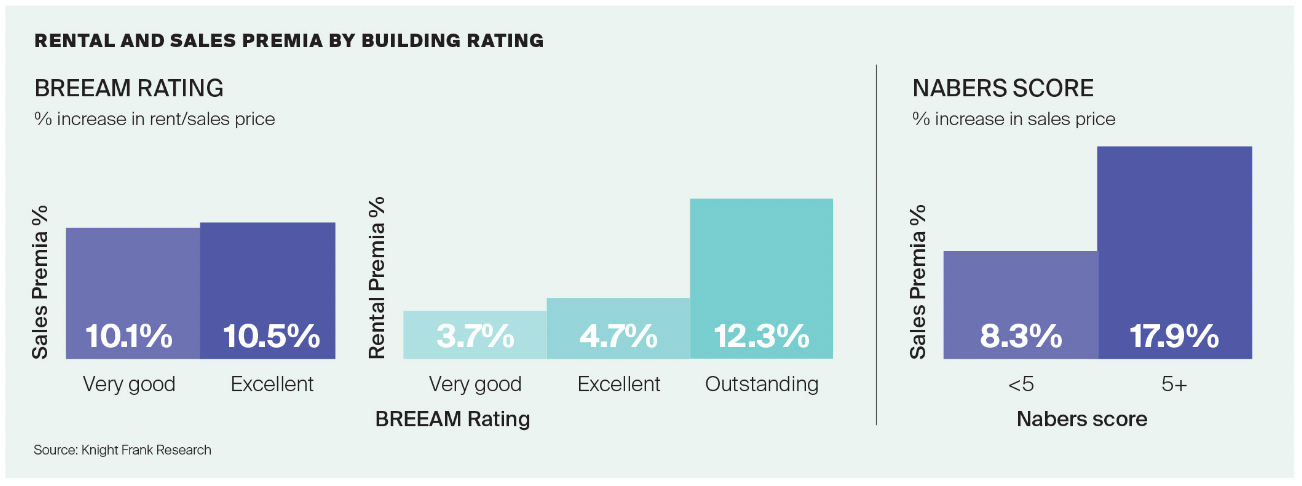Revealed: the value uplift for “greening” your home
Making sense of the latest trends in property and economics from around the globe
5 minutes to read
The BoE draws a line (sort of)
Whether or not the Bank of England will end its emergency intervention in the UK's debt markets on Friday is subject to a fair amount of uncertainty this morning.
Governor Andrew Bailey told pension funds yesterday that they had until the end of the working week to shore up their positions, sending sterling down to $1.09 for the first time since the Bank's initial intervention. Yet, BoE officials have signalled privately to bankers that emergency purchases may be extended beyond the Friday deadline, according to a report in the FT this morning.
The sell-off in the gilts market and subsequent rise in yields fed directly into the swaps market, which is used to price mortgages. The first round of volatility sent swap rates soaring and average two-year fixed rates north of 6%. Relative calm in the swaps market had prompted expectations we might see lenders reintroduce some products at more sensible rates over the coming fortnight, but that will depend on the stability of the bond market.
Growth and inflation
The Bank's intervention in markets risked clashing with its obligation to control inflation, Mr Bailey said in his statement. Indeed, while the government's proposed tax cuts would boost growth in the short term, it would mean the UK faces higher inflation for longer, the International Monetary Fund said in a new set of forecasts yesterday.
In fact, policies in the mini-budget would help push UK economic growth north of 3.5% this year, outpacing the rest of the G7, the group said. By the same token, the IMF expects UK inflation to average 9% next year with growth subsiding to 0.3%, among the lowest in the G7.
The Chancellor Kwasi Kwarteng earlier this week brought forward plans for his "medium term fiscal statement" plus a new set of OBR forecasts to October 31st. The government is expected to announce reforms to various sectors including housing ahead of those forecasts.
The Times had details of those proposed reforms to housing policy yesterday. They include raising the threshold at which affordable homes must be built from developments with ten houses to those with up to 50 houses, expanding permitted development rights so people can build extensions or add extra floors to their properties without planning permission, ending no-fault evictions, plus some easing of biodiversity net gain rules.
Downside risks
Things are going to get worse before they get better - that's the key takeaway from the IMF's global outlook.
Global growth will slow to just 2.7% next year, the weakest growth since 2001. The cost-of-living crisis, tightening financial conditions in most regions, Russia’s invasion of Ukraine, and the lingering COVID-19 pandemic all weigh heavily on the outlook, the group said. Inflation is forecast to peak at 8.8% this year before easing to 6.5% next year.
"The global economy’s future health rests critically on the successful calibration of monetary policy, the course of the war in Ukraine, and the possibility of further pandemic-related supply-side disruptions, for example, in China," the IMF said in a pretty gloomy executive summary. Risks are tilted to the downside and it puts a one-in-four chance that global growth falls to 2% next year.
Decarbonisation
European property owners, investors and valuers have failed to account for the cost of transitioning to net zero and many offices, shops and homes remain overvalued, according to an Urban Land Institute report covered in this morning's FT.
The ULI will publish a methodology for assessing the costs of decarbonisation later today, which it believes will put a price on the transition to net zero.
This story runs both ways. Investors and occupiers have increasingly sought out more energy efficient buildings, prompting growth in both sales value and rental premiums.
Rental premiums can reach 12.3%, with a significant step-up in prime Central London office rents for the very highest green-rated buildings, according to Knight Frank Research (see chart). The sales price premium is even higher - NABERS rated buildings in Australia reach up to 18% higher on average than an equivalent ‘brown’ building.

Green premiums
Green premiums extend to homes, too.
New analysis from Oliver Knight and the team compared the EPC certificates of 30,000 dwellings that improved their home energy performance in the previous five years. The results reveal that homes which had moved from a D to a C rating added an additional 3% to their value over and above local house price growth, equivalent to £9,003 based on the average resale value.
Homes moving two bands from an E to C saw an average price uplift of 8.8% (£29,289), and from F or G an additional 19.6% (£64,444). The analysis controlled for changes to property size.
While the data confirms there is value in upgrading a home’s energy efficiency, this will need to be balanced with the upfront investment needed to improve it, as well as the payback time for those not intending to sell immediately. We estimate that the average cost spent improving a dwelling previously rated EPC band D or below to at least a band C is £9,260. Though this varies depending on numerous factors, not least the size, age and existing efficiency rating of a property.
Properties with an EPC rating in band D, for example, typically spent £5,500 on the necessary improvements to move to band C, with this figure almost doubling to over £10,000 on average for properties in bands F and G.
In other news...
UK economy unexpectedly shrinks in August (Reuters), the latest UK jobs data reinforces the chance of a big hike in November (Resolution Foundation), UK consumer spending lags far behind inflation, surveys show (Reuters), UK needs 62 billion pounds of cuts or tax rises get debt under control (The IFS), and finally, JPMorgan chief Jamie Dimon warns US recession ‘likely’ in six to nine months (FT).